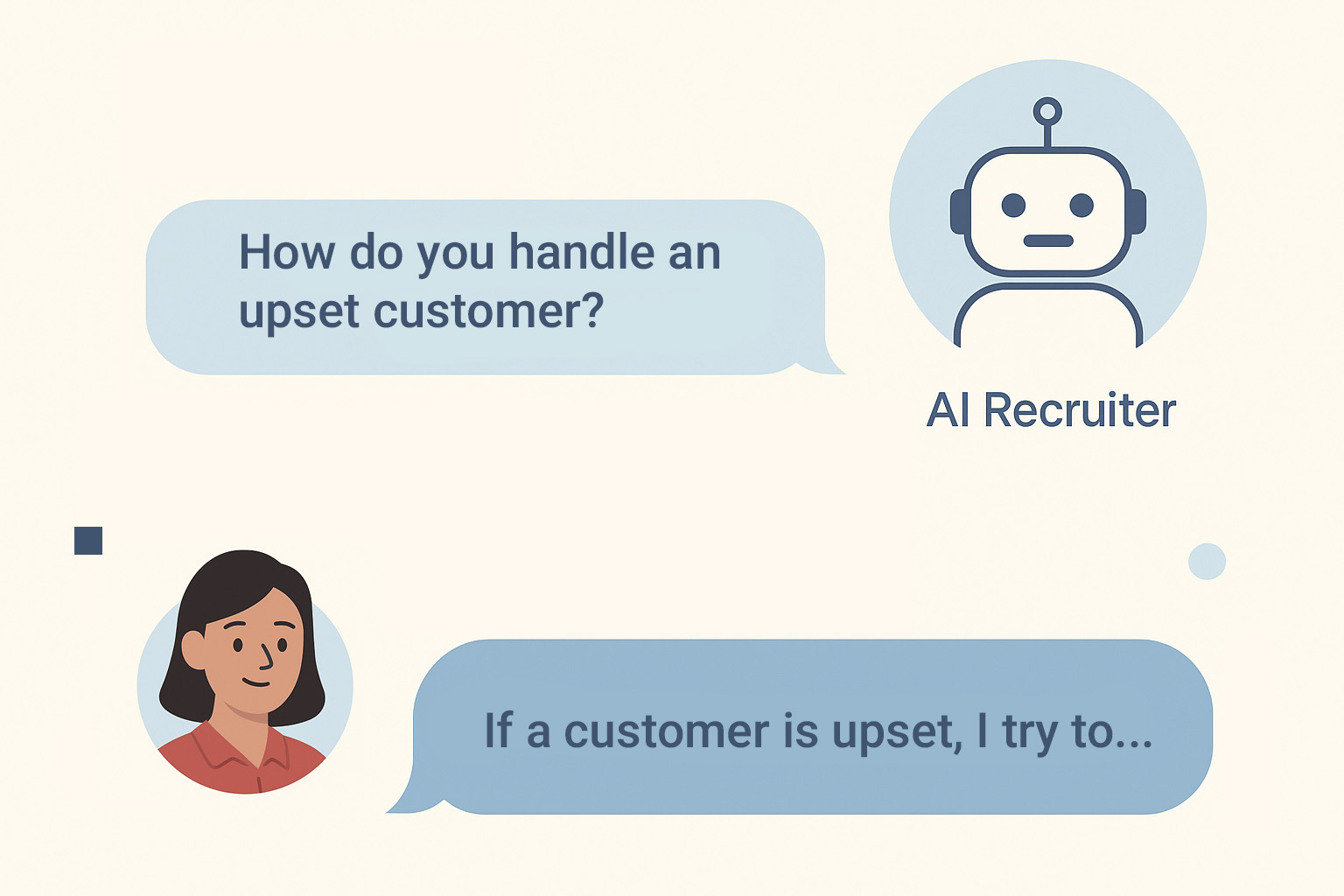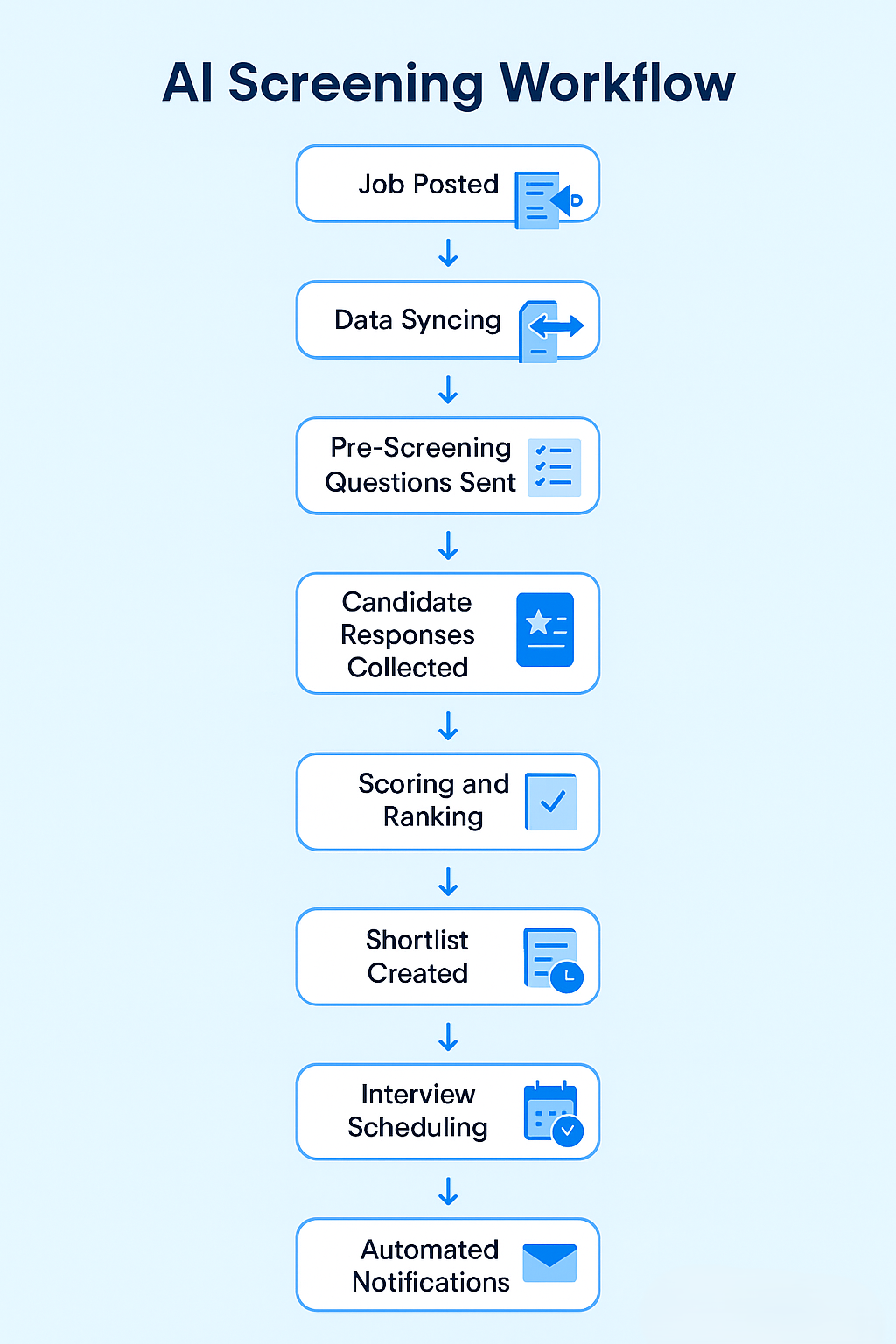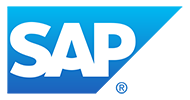Recruiters are overwhelmed by a surge in unqualified job applications. Learn what’s causing the crisis—and how to regain control of your hiring process.
TL;DR
Recruiters today face overwhelming volumes of unqualified applications. AI for pre-screening and shortlisting helps solve this by automating resume parsing, sending tailored pre-screening questions, scoring applicants, and creating shortlists. The result? Faster hiring, better consistency, and more time to focus on qualified candidates.Table of Contents
Recruiters today aren’t suffering from a lack of applicants. Quite the opposite—they’re buried under a mountain of resumes. But here’s the problem: most of them don’t fit the role at all.
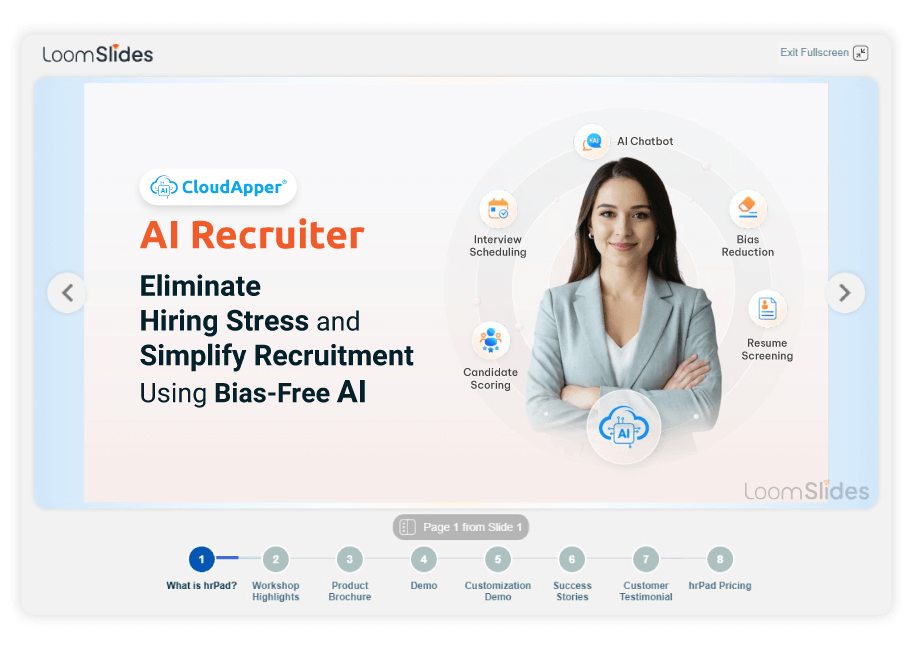
For more information on CloudApper AI Recruiter visit our page here.
In fact, some recruiting teams report that over 90% of incoming applications are completely unqualified. What used to be a manageable pipeline has now become noise. And it’s not just frustrating—it’s unsustainable.
The Rise of Mass Applications
What changed? A combination of automation and desperation.
With the rise of AI-generated resumes, browser extensions that auto-apply to jobs, and “one-click apply” features on platforms like LinkedIn and Indeed, job seekers can now apply to hundreds of roles in a single session. The intention may be good—but the result is a flood of irrelevant applications.
-
According to a 2025 LinkedIn Report, 64% of job seekers admit to applying to roles even when they don’t meet the qualifications.
-
A study by SHRM found that the average corporate job opening receives 250+ applications, yet only 4–6 are interviewed.
-
One recruiter on Reddit stated:
“Thousands of people apply to everything… 90%+ aren’t remotely qualified. I spend more time filtering noise than recruiting.”
This isn’t just a volume issue—it’s a signal-to-noise ratio problem. Good candidates are getting buried under stacks of irrelevant resumes.
The Hidden Costs of Manual Screening
Manual screening of unqualified job application doesn’t just waste time—it impacts the entire recruitment cycle:
-
Delays shortlisting for qualified candidates, risking top talent dropping off.
-
Burns out recruiters, who spend hours reviewing mismatched resumes.
-
Frustrates hiring managers, who receive poor candidate pools.
-
Damages the candidate experience, as delays lead to silence or generic rejections.
Recruiters spend an average of 7 seconds per resume. Multiply that by 500 applications, and you’re looking at nearly a full workweek spent scanning resumes—many of which never deserved a second glance.
The AI Problem—And the AI Solution
Interestingly, AI is both the cause and cure of this problem.
While AI tools have made it easier for candidates to mass-apply using generated cover letters and keyword-optimized resumes, smarter recruitment teams are also turning to AI-powered screening to regain control.
This is where CloudApper AI Recruiter enters the conversation—quietly, efficiently, and purposefully.
It doesn’t promise magic. Instead, it offers structure.
Here’s how:
-
Pre-Screening Automation: Instead of just filtering resumes by keywords, the system sends role-specific questions to applicants via chatbot—questions they can’t just copy-paste answers to.
-
AI-Based Scoring: Candidate responses and resume data are evaluated against your job criteria. Those who meet the threshold move forward—everyone else is filtered out early.
-
Custom Criteria Control: You define what “qualified” means. Whether it’s shift availability, certifications, or specific years of experience, the system learns and adapts.
-
Engagement Filters: Candidates who ignore pre-screening steps or fail to complete them are deprioritized automatically.
The result? Recruiters don’t have to waste time screening hundreds of unqualified job applicants. They get a ranked shortlist based on logic—not guesswork.
How Recruiters Can Regain Control
Even if you’re not using automation yet, you can reduce the impact of unqualified job application volume with a few proactive steps:
-
Use pre-screening questions in the job application itself.
-
Be crystal clear about minimum requirements in the job description.
-
Limit application intake by disabling auto-apply or routing through a centralized system.
-
Track drop-off rates and adjust your workflow accordingly.
The long-term solution, however, lies in giving your team tools that scale with demand—without sacrificing quality.
Final Thoughts
We’ve entered a strange era in recruiting. The top of the funnel is full—often too full. But that doesn’t mean more choice. It means more clutter.
The goal now isn’t just to attract applicants—it’s to find the right ones quickly.
And that only happens when technology helps recruiters focus—not drown.
What is CloudApper AI Platform?
CloudApper AI is an advanced platform that enables organizations to integrate AI into their existing enterprise systems effortlessly, without the need for technical expertise, costly development, or upgrading the underlying infrastructure. By transforming legacy systems into AI-capable solutions, CloudApper allows companies to harness the power of Generative AI quickly and efficiently. This approach has been successfully implemented with leading systems like UKG, Workday, Oracle, Paradox, Amazon AWS Bedrock and can be applied across various industries, helping businesses enhance productivity, automate processes, and gain deeper insights without the usual complexities. With CloudApper AI, you can start experiencing the transformative benefits of AI today. Learn More
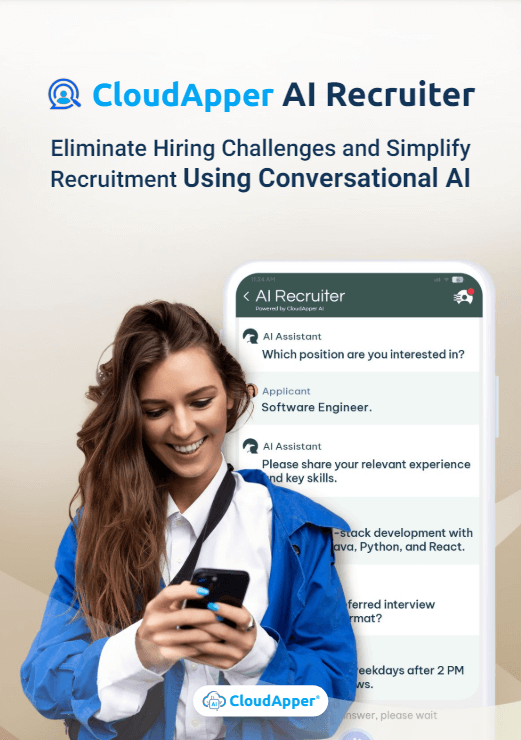
CloudApper AI Solutions for HR

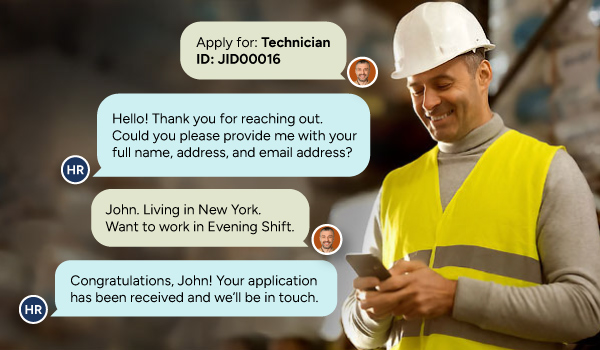

- Works with
- and more.
Similar Posts

10 Crucial Interview Questions for Store Managers & Assistant Store…
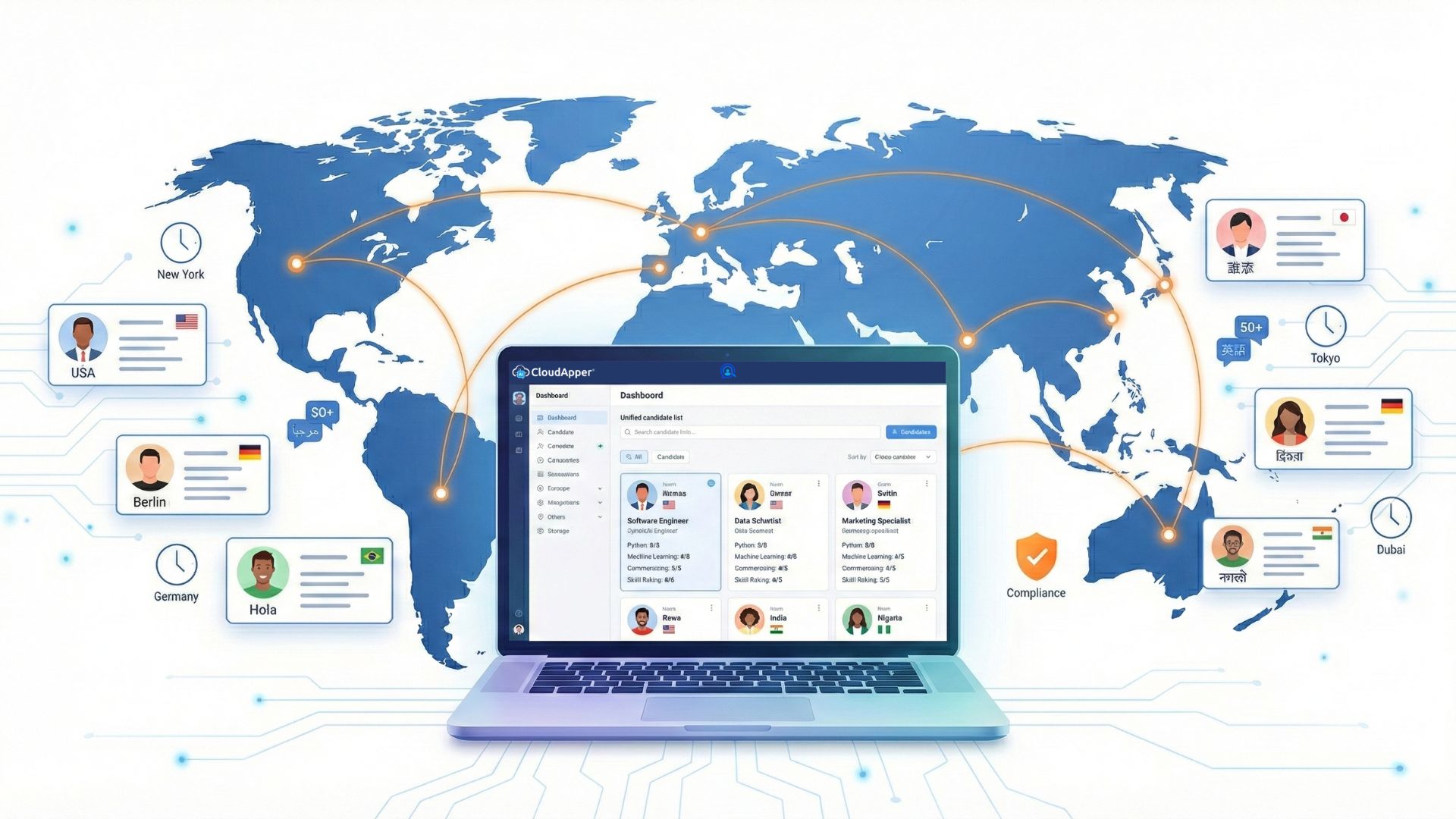
AI Recruiting Tools for Global Hiring: Why CloudApper AI Recruiter…
